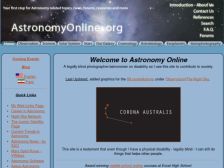Browse Resources
(8 classifications) (5 resources)
| Catalogs.
(3)
Charts, diagrams, etc (2) Clusters (1) Evolution (2) |
Globular clusters
(3)
Photographs from space. (7) Pictorial works (3) Study and teaching (Higher) (1) |
Resources | ||||||||||||||||||||||||||
|---|---|---|---|---|---|---|---|---|---|---|---|---|---|---|---|---|---|---|---|---|---|---|---|---|---|---|
| ||||||||||||||||||||||||||



